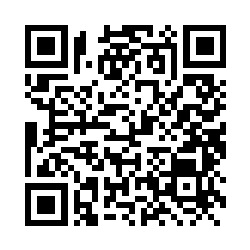Creating a digital magazine for your business can be fast, easy, and fun, but it can also be a frustrating process if you’re not sure how to do it right.
Don’t be afraid: we’ve got you covered. Just read on to learn how to create an online magazine and what are the best tools that can help you do that.
How to Create an Engaging Digital Magazine
#1 Identify the Goals of Your Magazine
The first step in making an online magazine, as in any other project, is to set goals and define what you want to achieve. Here are the questions to start with:
- Do you plan to write educational, promotional, or entertaining content?
- What will the overarching theme of your magazine be?
- What will the voice and branding of your magazine be?
- How much do you want your digital magazine to grow in the future?
- How often will you publish a new issue?
- Will you be monetizing your magazine, or will it be a free offering?
#2 Choose the Software that Suits Your Needs
What do all these tools have in common? They are very convenient to use and allow you to make digital magazines quickly and easily. So check out these tools for any level of skill and choose whatever suits you the best.
1. FlippingBook—an online service that allows you to make compelling magazines with a great reading experience, smooth page-flip effect, and comfortable viewing on any device. FlippingBook offers an opportunity to add your own branding, videos, GIFs, pop-up image galleries, forms and quizzes, and outbound links to make your magazine even more enticing and interactive.
2. Marq. An easy graphic design app that allows you to make multi-page layouts, manage all your brand materials and use them when building your magazines step-by-step. It features a variety of magazine templates with customizable elements such as fonts, colors, and images.
3. Canva. An easy web design app that enables you to make digital magazines without much effort. It offers you a big library of templates, and all you have to do is to choose the one you like and customize according to your needs.
4. Adobe InDesign CC. Professional-level design software for PC and Mac. It’s the most famous and widely used software for creating multi-page layouts, and the first choice for many marketers, designers, and publishers.
5. Bookwright. Book publishing software that offers a suite of creative functionalities for both beginners and more advanced users. It allows you to add your text or images, use templates for popular magazines, journals and newspapers, or start fresh with your own layouts.
💡 Want to create a magazine but don't have a PDF yet?
Create your PDF in Canva and publish it to FlippingBook right from your Canva account. To give you inspiration, we’ve designed 10+ stunning Canva templates: catalog, magazine, brochure, newsletter, flipbook, presentation, proposal, and report. Add any template to your Canva account and customize it to your liking. And then publish to FlippingBook straight away.
Learn more →#3 Write Compelling Content
When you’ve established your goals and chosen the right software, you can finally get to the creative part and start writing the content of your magazine. There are two main steps in creating your magazine content:
- Create your content strategy. Your magazine as a whole has one main theme, so each issue will be covering some specific aspect of this theme. You can start with creating a content strategy for the first few issues, writing a short summary of each issue that you can later tweak as needed.
- Write the articles. Check with your content strategy to see how many articles you need to write and decide if your team is able to write them or if you need to outsource to some new writers specifically for your magazine. Make sure to stick to your brand voice and values at every stage of creating and editing the content. Because a magazine will be representing your company to a wider audience so it’s essential to keep your brand consistent.
#4 Create Engaging Design
A well-designed magazine has recurring elements that are shared across the whole design, from cover to cover. Such thematic designs are the hallmark of a professional and carefully planned magazine.
So if you are not quite familiar with the process of creating digital magazines, here’s a checklist to help you make your magazine nice-looking and consistent:
- The magazine cover plays an important role in engaging readers—it works as a powerful marketing tool. Yes, magazines are really judged by the cover. So make sure your cover is compelling by using high-impact photography and an eye-catching header. A good rule of thumb is to display one main headline and no more than five sub-headlines to ensure a clean layout.
- Color palette—choose one to three colors and use these consistently for headlines, texts, and backgrounds. Many effective magazines use color sparingly, demonstrating that a simple pop of bold color can be more striking than a palette of rainbow brights.
- Use consistent typefaces, type weights, and sizes. Once you choose them, stick with them across the whole magazine, and the next issues, as well. It will help your readers recognize you and your unique style instantly.
- Shape and graphics—use the same shapes or image borders and other graphic elements across the magazine.
- Page numbering style and running headers should also be consistent.
For instance, look at this rich blend of tropical colors that help to create a dreamy atmosphere of traveling across the pages of the magazine.
Create yours
What Are the Benefits of Using Digital Magazines?
A magazine is the perfect multi-functional product for your business. It gives you many opportunities to develop your marketing activities and enhance your content distribution strategy. And once your magazine is ready, you can use it for many different purposes. Here’s what a magazine, made with FlippingBook, a digital magazine creator, allows you to do.
Creating a Wider Outreach
A magazine is a great way for more people to learn about you and your products and services. You can share your online magazines through all the channels you have: send your client the direct link to your magazine in a newsletter, embed it into your blog or website, or share it on your social media. What's more, you can place a QR code anywhere you need. Such a tool as FlippingBook allows you to generate a QR code, download it in PNG format, and use it on your website, blog, or printed materials. The more channels, the better!
See for yourself: scan this code to see a gorgeous magazine.
Engaging Clients with Rich Interactive Content
You can stand out from the crowd with your digital magazines, full of interactive perks and your own branding. Here are the interactive elements that you can add:
- Add your logo, background image, and company colors to raise your brand awareness and recognition.
- Include videos, GIFs, and pop-up images to illustrate your content and give a reader much more useful and enticing details.
- Don’t forget to add links to your website and to other helpful resources so that your clients have everything at their fingertips.
Building relationships
Magazines build trust between your business and your audience. Such content offers huge value to interested customers, who can easily get info about your services, industry, and business.
Expert status
Having a quality magazine gives you the opportunity to earn a reputation of an expert and influencer in your niche. It’s more work than a blog, but if you really go for it, you’ll get way more dividends.
Start Creating Stunning Digital Magazines Right Away
Once you’ve published your digital magazine, you’ll have a ready-to-roll process for all the next issues. So making magazines will become a creative and inspiring activity, without the frustration and worries.
And they help you stay competitive in the digital publishing world, become an authority in your niche, and create a mass of loyal readers. So we think it’s totally worth a try!






